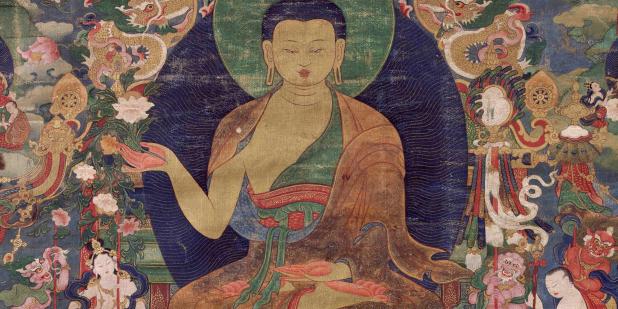Join us for a free one-day workshop for educators at the Japanese American National Museum, hosted by the USC U.S.-China Institute and the National Consortium for Teaching about Asia. This workshop will include a guided tour of the beloved exhibition Common Ground: The Heart of Community, slated to close permanently in January 2025. Following the tour, learn strategies for engaging students in the primary source artifacts, images, and documents found in JANM’s vast collection and discover classroom-ready resources to support teaching and learning about the Japanese American experience.
Gateway to Himalayan Art and The Tibetan Shrine Room
The Rubin Museum of Art presents an exhibition showcasing Himalayan art and Hindu works.
Where

Gateway to Himalayan Art acquaints visitors with the principal concepts of Himalayan art and its cultural contexts. A large multimedia map orients visitors to the geographic scope and diversity of the Himalayan region and adjacent cultural areas that comprise the greater Himalayan cultural sphere, including parts of India, China, and Mongolia. From there, visitors are invited to explore four main sections: Figures and Symbols, Materials and Techniques, Purpose and Function, and Tibetan Art in Context, which includes the Rubin Museum's Tibetan Buddhist Shrine Room.
The exhibition as a whole provides visitors with tools for contextualizing and understanding the rich artistic traditions presented throughout the Museum. Large format graphic panels in the exhibition explain symbols and gestures used in Himalayan Hindu and Buddhist works of art. A three-dimensional installation presents in detail Nepalese lost wax technique in its six stages. Methods of thangka painting with ground mineral pigments and iconometry (guidelines for proportions) are explained with grid drawings alongside an actual painting of the same subject. In addition to paintings and sculpture, objects such as a stupa, prayer wheel, and ritual implements demonstrate that the accumulation of merit, the secular concerns of long life, wealth, and spiritual gains are sought by patrons, and hoped to be fulfilled through ritual use of these objects.
A Looking Guide, filled with tips for easy recognition of the Buddhist figures and symbols in this and other exhibitions throughout the Museum, is available as a take-home brochure.
Curated by Karl Debreczeny and Elena Pakhoutova
Featured Articles
Please join us for the Grad Mixer! Hosted by USC Annenberg Office of International Affairs, Enjoy food, drink and conversation with fellow students across USC Annenberg. Graduate students from any field are welcome to join, so it is a great opportunity to meet fellow students with IR/foreign policy-related research topics and interests.
RSVP link: https://forms.gle/1zer188RE9dCS6Ho6
Events
Hosted by USC Annenberg Office of International Affairs, enjoy food, drink and conversation with fellow international students.
Join us for an in-person conversation on Thursday, November 7th at 4pm with author David M. Lampton as he discusses his new book, Living U.S.-China Relations: From Cold War to Cold War. The book examines the history of U.S.-China relations across eight U.S. presidential administrations.




